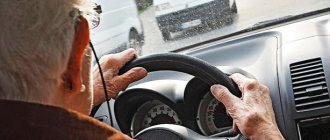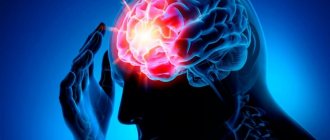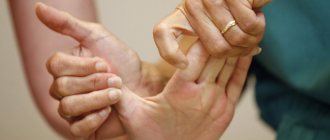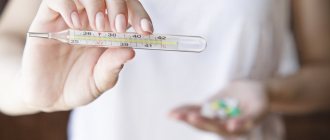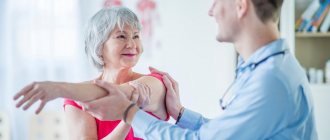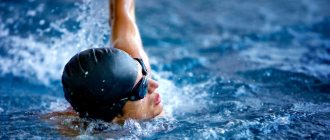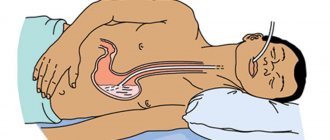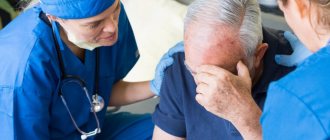A stroke is a signal to change your life, restore and maintain health. “Consider this your second chance,” says Alexander Atyashev, a neurologist at the Medicare clinic. How to recover from a stroke and what can relatives do to bring maximum benefit to the patient during the rehabilitation period?
Alexander Atyashev.
To minimize the consequences of an ischemic stroke, there is only the first 4.5 hours
— Alexander, what happens in the body during a stroke and why are its consequences so serious?
— A stroke is an acute disorder of cerebral circulation when the blood supply to any part of the brain is cut off. The blood supply is disrupted - and damage or death of brain cells occurs, and this leads to disruption of any body function - speech, movement of the limbs, mental abilities, attention, memory, etc.
— Why is cerebral circulation disrupted?
- A stroke occurs either due to a blockage of a blood vessel that supplies the brain (ischemic stroke) or when a blood vessel in the brain ruptures (hemorrhagic stroke).
Blockage of the vessel can be caused by the formation of atherosclerotic plaques (fatty deposits) or a blood clot that enters the bloodstream and causes a blockage of the artery.
Vessel rupture during a hemorrhagic stroke usually occurs in the softened artery wall: blood leaks out and accumulates, which leads to compression of brain tissue and cell damage. In both cases, as a result of a lack of oxygen, some brain cells at the site of the stroke die, and some are damaged.
Within minutes, the person loses the ability to reason, speak, or move their arms or legs.
about possible contraindications, consult a specialist
- What symptoms indicate a stroke?
— There is a simple test that will help relatives recognize a stroke. You need to ask him to do only three actions: smile, raise both hands and say his name. If the corner of the mouth droops when smiling, if a person cannot raise his arms because one of them is weak, and if he pronounces his name unintelligibly, call an ambulance immediately.
Remember: in case of an ischemic stroke, to effectively remove a blockage of a vessel (thrombus), there is only 4.5 hours until the cells of the damaged area are completely dead.
Signs of a stroke may also include:
- sudden numbness of the face, arms, legs, weakness in the limbs,
- sudden loss of consciousness, loss of ability to speak, difficulty speaking, loss of ability to understand the meaning of someone else’s words,
- sudden loss of vision in one or both eyes,
- sudden disturbance in gait, dizziness, loss of balance,
- sudden severe headache of unknown cause,
- sudden nausea, pain in the face or limbs, general weakness (more often in women).
— Why is it so important to seek medical help in the first hours after a stroke?
— A stroke is an emergency. Medical care is most effective only in the first 3-5 hours: this is the so-called therapeutic window, during which treatment can restore damaged brain cells and minimize the consequences of a stroke. If you do not seek help in time, the cells will die irrevocably, and further treatment will be aimed only at adapting to life, taking into account the existing disorders.
about possible contraindications, consult a specialist
— How is a microstroke different from a regular stroke? Is it just as dangerous and also requires treatment?
— A microstroke, or transient ischemic attack (TIA), is a temporary disruption of the blood supply to part of the brain, that is, a harbinger of a stroke. During a TIA, a person may experience some or all of the symptoms described above.
The peculiarity of a micro-stroke is that these symptoms are usually mild and pass quickly - the next morning a person can feel great.
But take them seriously - be sure to call an ambulance! Your health and life depend on it.
REDUCING THE CHANCE OF REPEATED STROKE
Is there a risk of another stroke?
If you have had a stroke, you are at risk of having another stroke. However, there are several things that can reduce the risk of a second stroke:
- Taking the medications you have been prescribed
- Control and maintain blood pressure within normal limits
- Control and maintain blood cholesterol levels within normal limits
- Diabetes control (if necessary)
- Adapting to a new way of life to reduce danger
Changes in your life may include:
- Stop smoking
- Healthy and varied diet
- Maintaining a Healthy Weight
- Staying physically active
- Reducing alcohol consumption
Rehabilitation begins on the first day
— When can you start rehabilitation after a stroke?
- After completion of treatment of the acute phase, that is, in fact, on the first day after the stroke. Even if the patient is still lying down, he can and should move - turn his head, move his arms and legs, try to sit up.
Even with bedridden patients, you can and should do passive exercises.
The rehabilitation program begins in the hospital and continues at home (or in a sanatorium, medical center). Every day after a stroke is work on the road to recovery.
about possible contraindications, consult a specialist
— What should be the first step in the recovery process?
— First of all, you need to work on correct body positioning: this facilitates the restoration of motor abilities, prevents muscle injuries, contractures, and reduces pain. Main principles of positioning:
- maintain the maximum possible symmetry of key points (shoulders, shoulder blades, pelvis), keep the head, shoulders, hips in the correct position.
- golden melt - the patient lies on either side, but not on the back.
- do not ignore the immobile part of the body. The bedside table is placed on the affected side so that when moving, for example, behind a mug, the patient reaches across the affected side and uses it. Learn to use your weak hand - for support, support, opening a door, turning on a light. It is important to develop a strong habit of using your weak hand as much as possible.
— Does the patient need physical therapy?
- Necessarily. Exercise therapy is necessary to restore movement skills and prepare for the moment when you can move more fully. As a result of regular exercises, shortened muscles of the hand, forearm, and back of the legs will be stretched, weakened arm muscles will be activated, the amplitude of movements will increase, and balance while sitting and standing will improve. If the patient has speech impairment, articulation exercises are necessary (for the tongue, lips, lower jaw muscles, facial muscles). Vestibular gymnastics is needed to restore coordination of movements, exercises for rehabilitation for movement disorders. Having mastered these exercises under the guidance of a doctor, you can do them at home - first with the help of relatives, then on your own. The main thing is regularity: 5-6 times a week, 30-40 minutes a day.
Advice to the patient’s relatives: treat his complaints wisely and do not allow him to succumb to laziness and despondency.
A patient in this state is most often inclined to lie down, but your task is to insist that he moves. Adequately assess his condition, and if he can get to the toilet on his own, do not place the dry closet near the bed. If the patient is able to feed himself, do not spoon feed him.
Relationship
A stroke does not only affect you, but also those around you. Your relationships with others may become difficult and may be affected by how you feel. Your family and friends will try to understand how you feel and you should be honest with them. By telling them about your feelings and trying to understand what they feel, you can help yourself. Adapting to life after a stroke will lead to some changes in your life and in the life of your spouse, and this can then lead to stress in your relationship. Emotional changes, changes in your body and difficulties in relationships can also affect your sex life.
Relearn to speak, eat, understand and remember
— How should you prepare a home for a patient after a stroke? And what additional equipment will he need?
— While the patient is regaining the daily skills necessary to independently care for himself, while he has difficulty moving, it is necessary to ensure that he can move safely. For this:
- remove carpets and wires on the floor to prevent the patient from tripping. Make sure all paths the patient uses are clear and well lit.
- equip the bed with rails so he can sit down
- in the bathroom, attach special vertical railings that the patient can hold on to,
Special devices - a toilet chair, a bath seat - will make the patient’s life easier at home.
- install a seat in the bathtub or shower so that the patient can wash while sitting,
- raise the height of the toilet using a bedside chair,
- when the patient learns to walk, buy him a walker, and later a cane.
about possible contraindications, consult a specialist
— After a stroke, people often have speech impairments. Can it be restored?
— Yes, articulation gymnastics, which I mentioned above, as well as classes with a speech therapist, help restore speech functions, but the main thing is communication with loved ones, that is, daily speech practice. Speech disorders can be of two types - aphasia (the patient has difficulty understanding words and expressing his thoughts) and dysarthria (there is understanding, but pronunciation and fluency and clarity of speech are impaired). General rules:
- Ask questions that the patient can answer “yes” or “no.”
- speak slowly and clearly, give the patient time to respond, do not speak for him.
- be patient and consistent. With regular exercise, improvement will definitely come over time.
— What should a person be fed after a stroke?
- Patients with stroke often have a problem with impaired swallowing - dysphagia, and there is a risk of obstruction of the esophagus and aspiration (penetration of foreign bodies into the lungs). It can cause suffocation, infectious diseases, and pneumonia. Such patients need to be fed, strictly following the recommendations: only in a sitting position with support under their back, turning to the healthy side at the time of swallowing, only with a small amount of food.
Semi-hard foods are best tolerated - casserole, thick yogurt, pureed vegetables and fruits, watery porridge.
Give solid and liquid foods at different times. Eliminate from your diet foods that often cause choking - bread, cookies, nuts, etc.
— What other disorders does a stroke lead to?
— During a stroke, areas of the brain that are responsible for the processes of learning, understanding, and communication can be damaged. Memory deterioration and problems with perception are often observed: a person does not realize that the functions of his body are impaired, he does not recognize familiar objects or people, he may ignore some part of the body. Over time, with proper therapy, lost skills will be restored, but this is a slow process.
At home, you can and should exercise your memory and attention: ask the patient about what he did/saw yesterday, look at a family album, solve riddles, remember similar objects by shape, color, etc.
Another important point is the patient’s mood. A person experiences despondency, emptiness and hopelessness due to the fact that he cannot fulfill his previous social functions (work, take care of his family), a feeling of humiliation due to lost basic skills, and may refuse to communicate. Sudden mood swings, aggression, anger, laughter and tears for no reason are possible.
In such cases, the patient may need treatment with antidepressants, and relatives may need to be calm and refrain from criticism.
Both the patient and his family need to remember that all of these are consequences of a stroke, which will go away as they recover.
about possible contraindications, consult a specialist
Returning to work
A stroke will be a real challenge for you if you have previously worked. It can leave a big imprint on your life and change your role in the family and society. Many people do not look at the situation realistically and try to do many things in a short period of time. Fatigue, cognitive complications such as memory loss, and difficulty concentrating may mean you will not be able to return to work. It is important to have an honest conversation with your employer so that you can consider on-the-job adaptation. Part-time work and a reduced workload may be a viable option. Don't be too hard on yourself if things don't work out or aren't going as well as they did before you had your stroke. A lot of people are returning to work. Many see this as an opportunity to try something new, such as working from home or taking on new responsibilities.
Move!
— How to choose the right physical activity after a stroke?
— It is necessary to move regardless of the degree of impairment after a stroke, with any degree of limitation.
If the functions of your legs and arms are not impaired, get up and start moving as quickly as possible! Do physical therapy, take the stairs instead of the elevator, walk down the street, garden, play with your grandchildren. Any activity that you enjoy is fine—just make a commitment to move every day.
If there is weakness in the limbs, but they work, you can walk, including on a treadmill, it is useful to swim, do gymnastics in the pool, yoga, and dancing.
Even if the patient is in bed or in a wheelchair, he can also move - do strength exercises, stretching exercises.
— Can a person always return to normal life after a stroke?
“It depends on the volume of damaged cells, what part of the brain is affected and whether medical assistance was provided on time. With due persistence, patience, and the help of doctors and relatives, lost functions are restored.
In my practice, there were patients who returned to work even after several strokes.
Both the patient and his family need to understand that recovery is a long and complex process; one should not expect instant results and fall into despair when they do not exist. There will be good days when you make huge strides, and bad days when you seem to have slipped back to where you started. Don’t strive to embrace the immensity, don’t rush things, but divide your goals into:
- the nearest ones - which can be tracked and measured. For example, if the patient was lying down in the first days, the immediate goal would be to sit up in bed and eat on his own. Holding a mug, getting up and walking to the door of the room, doing hygiene procedures - all these are also immediate goals.
- distant - what you want to achieve in 6 months or more. Return to work, sports, hobbies - it is better to discuss all these goals with your doctor to understand what degree of functional restoration you can expect.
What should you expect when you return home?
When you are discharged from the rehabilitation center, you will be given a discharge summary. It will cover all the necessary guidelines for caring for you at home, as well as the necessary equipment and supplies you may need. Returning home can be initially scary. You may not fully recover and will need to continue rehabilitation on an outpatient basis. You may also have many questions about how you can continue living a full life after a stroke.


